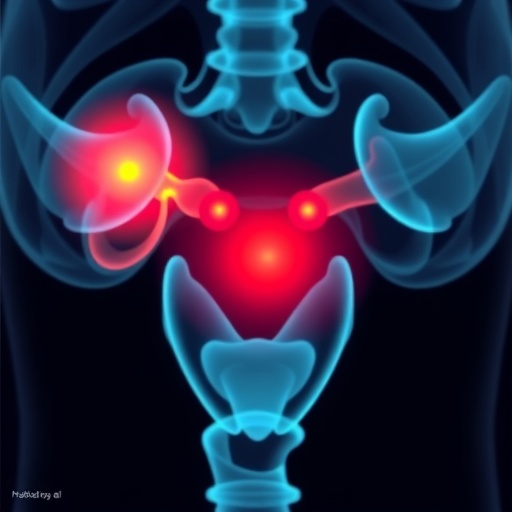Women suffering from bacterial vaginosis (BV) have faced a concerning pattern in their health trajectories. Previous studies have indicated a notable link between BV and increased susceptibility to chlamydia, a prevalent and potentially severe sexually transmitted infection. However, recent groundbreaking research conducted by experts at Albert Einstein College of Medicine, Roswell Park Comprehensive Cancer Center, and Icahn School of Medicine at Mount Sinai provides new insights into this intersection. The study published in Cell uncovers that BV is not a singular condition but rather comprises two distinct subtypes, one of which dramatically heightens the risk of developing chlamydia.
The implications of this finding are profound, especially when considering the demographic disparities prevalent in the incidence of both BV and chlamydia infections. The research highlights the urgency of focusing on young Black and Hispanic women, who are disproportionately affected by these conditions. With rates indicating that up to 50% of Black and Hispanic women experience BV, and adolescent and young adult females in these groups having a five-fold increased risk for chlamydia, the need for targeted studies and interventions has never been clearer.
Dr. Robert Burk, the co-leader of the study and a noted expert in the field, emphasized that while it has been known that BV raises the risk for chlamydia, the underlying mechanisms had remained elusive. This research successfully illustrates how specific changes in the cervicovaginal microbiome play a crucial role in predisposing women to chlamydia infections. The research team utilized cutting-edge DNA sequencing technologies to analyze cervicovaginal microbiomes among 560 adolescent and young women both prior to chlamydia infection and after antibiotic treatments, marking a significant advancement in understanding the role of bacterial communities in infection dynamics.
Notably, the discovery of two distinct BV subtypes reinforces the complexity of the female microbiome. The first subtype encompasses a combination of ten interconnected bacterial types that is responsible for approximately 40% of all BV cases. This particular subtype was found to significantly increase the risk of acquiring chlamydia and its associated complications. Not only did this finding enhance our understanding of chlamydia infections, but it also highlighted the possible link between BV and more severe outcomes such as pelvic inflammatory disease.
Dr. Nicolas Schlecht, who also contributed significantly to this research, expressed hope that these findings could catalyze a broader understanding of how the cervicovaginal microbiome influences the risk of various infections, including chlamydia and human papillomavirus (HPV), which is known to contribute to cervical cancer. By revealing these connections, the study advocates for innovative strategies aimed at reducing cancer rates and complications arising from untreated infectious conditions.
The researchers advocated for a paradigm shift in how healthcare providers approach BV and chlamydia infections. Currently, the advanced methods employed to analyze the cervicovaginal microbiome are not widely accessible in clinical settings. However, there is a vision among researchers to make such analyses readily available in regular medical practice and perhaps even feature them in home testing kits, similar to COVID-19 test kits.
Dr. Burk drew an analogy between BV and high blood pressure, illustrating that both conditions can be asymptomatic yet pose significant health risks. Just as high blood pressure is regularly screened due to its role in cardiovascular disease, the screening and treatment of BV could potentially lead to a reduction in chlamydia cases. By focusing attention on BV management, healthcare professionals could develop preemptive measures to address potential chlamydia infections before they arise.
Diving deeper into the nuances of the research, the team highlighted the importance of community participation in this study. With the involvement of young women of color, the research effectively addressed a significant gap in the existing literature regarding BV and chlamydia infections. Dr. Angela Diaz pointed out that the goal is to continue understanding and addressing healthcare disparities, ensuring that tailored treatments and interventions are available to those communities most affected.
In practical terms, the research suggests that only a subset of BV cases may require treatment to mitigate the risk of subsequent chlamydia infections, potentially transforming clinical practice. These potential changes in treatment strategy could empower healthcare teams to prioritize care based on microbiome assessments, efficiently diverting resources and attention towards the most problematic cases.
Ultimately, this study signifies a notable advancement in understanding the intricate relationships between the cervicovaginal microbiome, bacterial infections, and prevention strategies for serious health outcomes. If successful in translating these findings into clinical settings, it could lead to heightened awareness and proactive management of BV and its implications for broader sexual and reproductive health. The call to action for the medical community is clear; recognizing and treating BV with the same diligence as other asymptomatic conditions could have a substantial impact on the health of women, particularly in underserved populations.
In summary, the innovative research highlights the critical intersection between bacterial vaginosis and chlamydia, offering new perspectives on disease management that could significantly alter outcomes for many young women. As the medical community rallies to adopt these insights, the hope is not only to advance scientific understanding but also to promote healthcare equity in an ongoing fight against infectious diseases.
Subject of Research: Bacterial Vaginosis and its relationship with Chlamydia infections in young women
Article Title: “Cervicovaginal Microbiome and Natural 1 History of Chlamydia Trachomatis in Adolescents and Young Women.”
News Publication Date: January 15, 2025
Web References: Albert Einstein College of Medicine, Cell Journal
References: Available upon request.
Image Credits: Albert Einstein College of Medicine
Keywords: Chlamydia, Bacterial vaginosis, Cervicovaginal microbiome, Adolescent health, Infectious diseases





